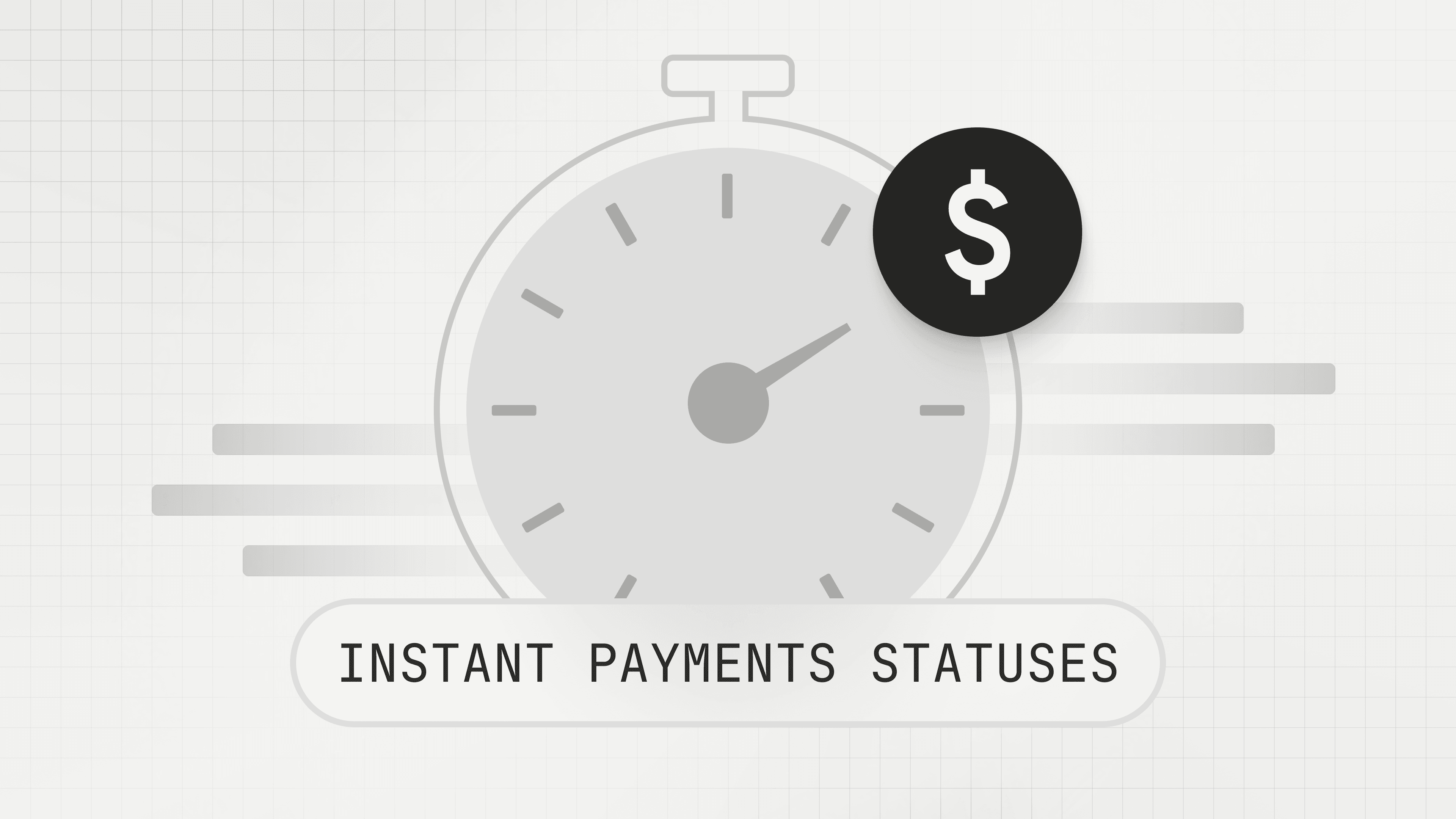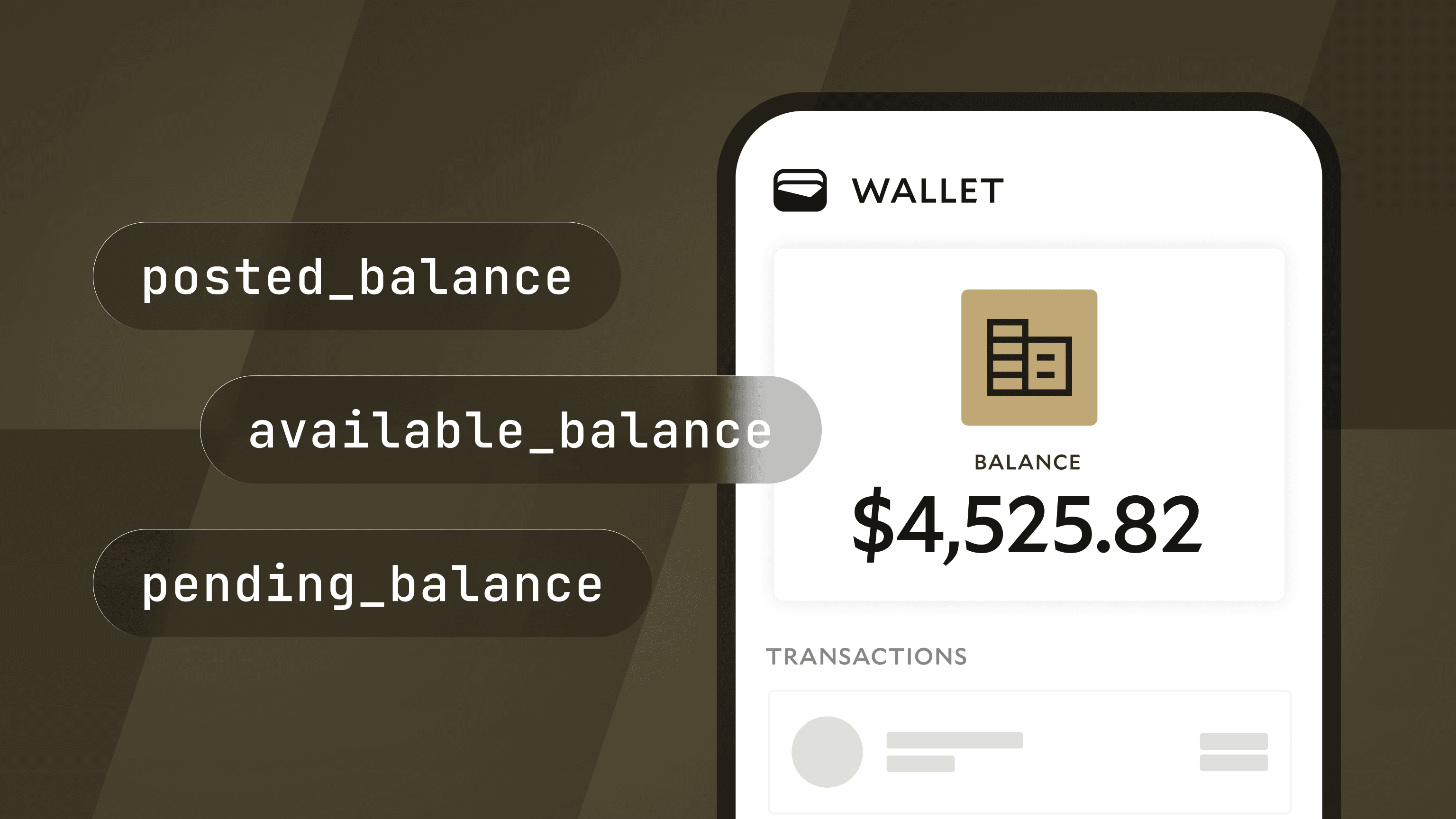Anchorage Digital Selects Modern Treasury to Power Money Movement Infrastructure.Learn more →
Move, Track, Match: A CFO’s Innovation Checklist for Payments
This article examines key considerations for CFOs when it comes to money movement. A three-part framework can help finance leaders address challenges and identify opportunities for payments innovation.

The new year offers fresh opportunities for CFOs when it comes to payments. The recent launch of FedNow and growth for embedded finance coincided in 2023 with new insights, particularly around organizational resiliency and diversification when banks fail. Unfortunately, many finance leaders still consider payment operations a pain point.
For CFOs at this moment, upgrading payments infrastructure and workflows can vastly increase efficiency and free up resources for high-value strategic work. The potential here is well-timed, considering that the finance leader role is increasingly taking part in decisions beyond the “back office.”
What Matters at This Moment for Finance Leaders
If a business is a body, CFOs are the backbone. Without their systematic support, companies simply can’t survive. The work of finance officers is the foundation and protective framework for any forward movement a company makes, and the role is expansive—extending from discrete, detailed processes to company strategy at the highest levels. Metaphors aside, CFOs oversee, safeguard, and share arguably the most business-critical data.
The role of the CFO has also been expanding. As McKinsey & Company puts it, CFOs have evolved from exclusively overseeing an organization’s finances to serving as “a cross-cutting common denominator linking every part of an organization.” Collaboration with technical teams is essential—without it, bad customer experience and adverse financial outcomes are more likely.
As Hippo Insurance CFO Stewart Ellis observes in the conversation below, it’s important to insist on a place at the table. CFOs need to “advocate for actually staying in business, meeting regulatory deadlines and audits. Not that it has to be their only focus or their biggest focus, but it's definitely one of the critical points that you use as it comes to prioritization and communication with product and engineering.”
In this conversation, two CFOs discuss the challenges of scaling payments.
One difficulty for CFOs is that many core decisions around payments have already been made before they step into the role. CFOs are often forced to strike a balance between fixing, ripping out, and executing their role right away. As Ellis advises, the key to this balance is prioritizing the pieces of infrastructure and customer experience where a company can be world class. For Hippo insurance, he realized, “We're not gonna differentiate on billing. But we can screw it up.”
For CFOs, primary challenges include:
- Outdated workflows that hinder speed and efficiency when moving money
- A lack of real-time oversight, insight, and accuracy when tracking balances
- Resource-intensive reporting, audit-prep, and reconciliation
For CFOs of companies that move money as a core part of their product, these problems are more pronounced because core in-product activity needs to be tracked for reporting. These issues can also be of greater concern for companies that have built their stack in house.
Addressing these challenges not only sets companies apart and unlock growth—it also opens up time for CFOs to contribute more meaningfully. Pipe CFO Lukas Wagner saved himself hours each week for strategic work (and saved his company six figures in staff time) by investing in automated payment operations that boosted speed, visibility, and accuracy.
In addition to saving time and reducing costs, a modern operating system for money movement can unlock new revenue through embedded finance opportunities. The modern CFO is not only focused on addressing downsides, but also on creating upsides.
For CFOs, key payments concerns include controls, visibility, precision, efficiency, auditability, reporting, and risk mitigation. Transformation requires assessing infrastructure and operations with these priorities top of mind.
Payments Innovation Checklist
Payments are more than money leaving one account and landing in another. The following checklist encompasses the full scope of payment operations (moving, tracking, and reconciling money), with a focus on the efficiencies and upgrades that benefit today's CFOs most.
Move money
From payment initiation to settlement, the movement of money presents a host of opportunities for automation and streamlining—with innovations that benefit both the end user (through improved customer experience) and the back end (driven by banking APIs).
1. Is the process for onboarding, verifying, and managing counterparties seamless and secure?
Onboarding is a first opportunity to showcase convenience for customers and vendors. A customizable in-app onboarding UI can help companies quickly build account creation flow without needing to touch sensitive data like social security and bank account numbers.
Automated account verification methods are vital, keeping in mind that the fewer people and tools the information passes through, the fewer potential points of failure. Robust verifications—whether through Plaid, microdeposits, or ACH Prenotes (helpful for discovering debit blocks)—save everyone time and reduce risk, as do NSF checks. Managing and storing sensitive counterparty information requires a secure platform, with automation for NOCs—email and spreadsheets are neither scalable nor secure for counterparty data.
2. Are controls centralized? Are user permissions and approval rules custom and robust?
As companies grow, the tools and infrastructure required to manage money movement can proliferate. Whether through increased volume, product expansion, or new acquisitions, teams wind up initiating transactions and managing incoming payments across disparate systems and workflows. At a certain stage, centralizing controls through a payments hub becomes non-negotiable.
Similarly, managing the people and processes behind payments can grow complicated. For the former, it’s essential to scope access to payments data and bank accounts by user. In terms of process, approval rules should be customizable by transaction amount, bank account, and specific metadata.
3. Does the business systematically handle payment exceptions, failures, refunds, reversals, and returns?
Any number of complications can arise before a payment settles. Whereas smaller companies can manually address one-off issues, at scale, handling even a small percentage of (inevitable) special cases can become a huge headache. A systematic approach is two-fold—preventative and corrective.
Proper onboarding and account verification can help avoid issues, as well as proactive communication ensuring customers know, for example, when debits are coming and what account name to expect. Companies need a system for addressing NOCs and customer-generated account updates. With growth, businesses will require tooling and automation for countless potential roadblocks to payment settlement (85+ ACH return codes to start), whether they build them in-house or incorporate a solution like Modern Treasury.
4. Are payment delays common? Could speed set your business apart?
In our recent survey, roughly 50% or more of financial decision-makers reported payment delays across rails. Optimizing payment speed requires seamless bank integrations and a streamlined tech stack. These same elements can help businesses leverage faster payment rails like RTP and FedNow, boosting customer experience and delight.
5. What is the company’s approach to organizational resilience? Can partners support scale?
Future-proofing payments is a key priority for financial leaders, especially in the shadow of 2023’s bank failures. As Slope CFO Ashish Jain observes, building for resilience involves both proactive cash management and a multi-bank strategy. “When your funds are diversified, and not just through money market funds but also with different institutions holding your capital, you have appropriate guardrails in place. It’s important to avoid having one point of failure,” he says.
Given the significant engineering lift required to build and maintain integrations to one bank (let alone several), a partner like Modern Treasury with pre-built integrations can significantly boost long-term security. Payments partners should also be rigorously assessed regarding their ability to perform at scale—building for scale is a key component of resilience.
Track running balances
High-growth companies that move money need a robust ledger to track and surface relevant data. Ledgers act as a source of truth for transaction history, user balances, payout decisions, authorization workflows, and the overall cash flowing through a product. And getting this wrong can result in a host of problems—an inaccurate aggregation of balances can lead to incorrect payouts, incorrect user balances, missing funds, or money created out of nothing.
A ledger database—also known as a product ledger or a transaction ledger—is different from a general ledger (GL). A GL, as you'd find in your ERP, tracks all all business activity (not just payments)—most companies with some scale need to track balances in their product, or for internal purposes (such as paying out suppliers).
6. Is the company’s ledger double-entry and immutable, with built-in audit trails? Does it sync with a data warehouse?
Many companies (not just startups) begin with a single-entry system and then attempt, later on, to transform all that data into a double-entry system, feeding into an ERP. Because this migration can be complicated and costly, businesses should incorporate double-entry accounting as early as possible. Immutability also ensures that the full history of how a database arrived at its present state is tamper-resistant and preserved.
A double-entry and immutable ledger makes it architecturally impossible to lose track of money. With audit trails that record the full lifecycle of every payment at the API level and the ability to sync ledgers with a data warehouse, reporting and analytics can be rendered both simple and accurate.
7. Is real-time data sortable, configurable, and easy to obtain?
The ability to customize data and reporting frees up time for more strategic work—the opportunity to meaningfully apply what the data reveals. Financial leadership should have ready access to real-time cash flow data, as well as historical balances, payment volumes, and payment by status. All balances and transactions in company ledgers should be fully queryable and meta-data should be freeform. Teams also need the ability to aggregate balances into categories according to company needs and expose them across the tech stack. For global companies, access to custom currencies for tracking is imperative.
8. Can your ledgering system keep pace with volume?
A robust financial database for scaling companies should be characterized by high-performance in tandem with concurrency controls. In the case of the former, financial database ledgers should exhibit high throughput and low latency. When thousands of transactions could be happening every second, a ledger needs to be optimized for efficient reads.
As companies grow, issues related to concurrency become a greater concern—multiple transactions will likely be happening at the same time and/or microservices will be simultaneously writing to the database. The ledger should remain consistent, even if transactions are written out of order.
9. Can a flexible ledger act as the foundation for new services and offerings?
Un-opinionated, flexible ledgers purpose-built for scale unlock opportunities for new products and services that move money. As an example, companies can confidently launch:
- Digital wallets wherein the ledger programmatically holds balances for users
- Card programs with a ledger that can power issuing
- Financial products including lending, insurance, and investing products
- Incentive programs with a ledger that can track any point or reward system
The right ledgering solution not only streamlines back-end processes —it ensures a positive customer experience when users can access accurate, real-time account data in a flash.
10. Can finance leadership access centralized transaction data across banks? Can other stakeholders?
Among the 90% of financial decision-makers we surveyed who said their company faces problems with payment operations, nearly one-third said they lacked real-time insight into cash balances across bank accounts (31%). Centralized visibility is vital for decision-making and auditability but not always simple to attain, especially as companies expand (Uber is a great example).
And while access to ledger data can be important for multiple roles, stakeholders like data, analytics, and reporting teams should be able to see, understand, and interact in a ledger without mutating or editing it. Modern Treasury pushes the entire data warehouse version of a ledger to teams in a read-only form.
Match financial data
Reconciliation is notoriously a task companies “throw bodies” at. Valuable human resources are commonly spent on manual transaction matching, lengthy close processes, and arduous audit prep. The alternative—automated, continuous reconciliation that judiciously incorporates AI—can be a game-changer for businesses.
11. Can reconciliation be automated?
On average, over a third of surveyed companies’ payment operations are still done manually and more than one half said that automated reconciliation would be a helpful upgrade. Batched, manual reconciliation (often managed via bank portals, spreadsheets, and email) disrupts financial and accounting workflows, increases costs, impacts ability to scale, and means faster payment rails like RTP and FedNow are out of the question.
It also creates data silos and impairs visibility, making finance teams less likely to catch errors and less equipped to optimize cash positions. To boost efficiency, companies need automated data ingestion mechanisms that can manage the complexity of accessing, parsing, and translating data from bank feeds. This capability in tandem with performant matching engines and exception handling can be hugely advantageous.
Using Modern Treasury, Masterworks can programmatically move money between multiple accounts in batches, looking at the roll-up of bank balances and reconciling those to an internal ledger.
12. Does managing payments end-to-end (including reconciliation) rely on multiple, discrete systems?
Financial decision-makers, on average, report using more than six systems to manage payment operations—with 14% using upwards of 10 systems—including bank portals, ERPs, spreadsheets, and treasury management tools. For reconciliation, this sprawl makes matching financial data even more complicated. Companies need a way to consolidate data for reconciliation from banks, processors, and internal systems—encompassing all accounts and transactions—in a single dashboard. Modern Treasury can serve as this single pane of glass, with continuous reconciliation and functionality like a side-by-side dashboard for working through transactions that did not automatically reconcile.
13. Is full visibility readily available for each payment, from initiation onward, to help address unreconciled payments?
Troubleshooting unreconciled payments is often a time-consuming and highly manual process. In fact, in some cash reconciliation or audit environments, teams give up on 1:1 transaction matching and opt instead to ensure the totals are equal (this article breaks down the math behind why they might do this).
Part of the trouble is that, given disparate systems, incomplete metadata, payment settlement delays, and other complicating factors (like a high volume of payments for the same amount), companies lack the ability to reliably track transactions from start to finish. A system that centralizes this data for every payment, giving teams visibility at a granular level, allows companies that need 100% reconciliation to be 100% sure their reconciliations are accurate.
14. Would virtual accounts unlock new opportunities?
Incoming payments can be particularly challenging to segment and attribute. Virtual accounts offer a reliable solution for reconciling these transactions. For Vinovest, an investment marketplace for fine wine, incorporating virtual accounts through Modern Treasury saved the team an average of 15 hours per week previously spent on manual attribution for incoming payments. Linqto reduced time spent on incoming wires by 60% with virtual accounts (also 15 hours per week). Not only can virtual accounts increase efficiency and save time—they also make embedding payments seamless and allow companies to create and manage FBO accounts.
Modern Treasury for Finance Leaders
From moving money to tracking running balances and matching transactions, Modern Treasury is a full-scale solution for CFOs looking to modernize payments. Our solution can help companies automate and centralize financial processes and data, with customizable controls and seamless integrations. Reach out to learn more.




